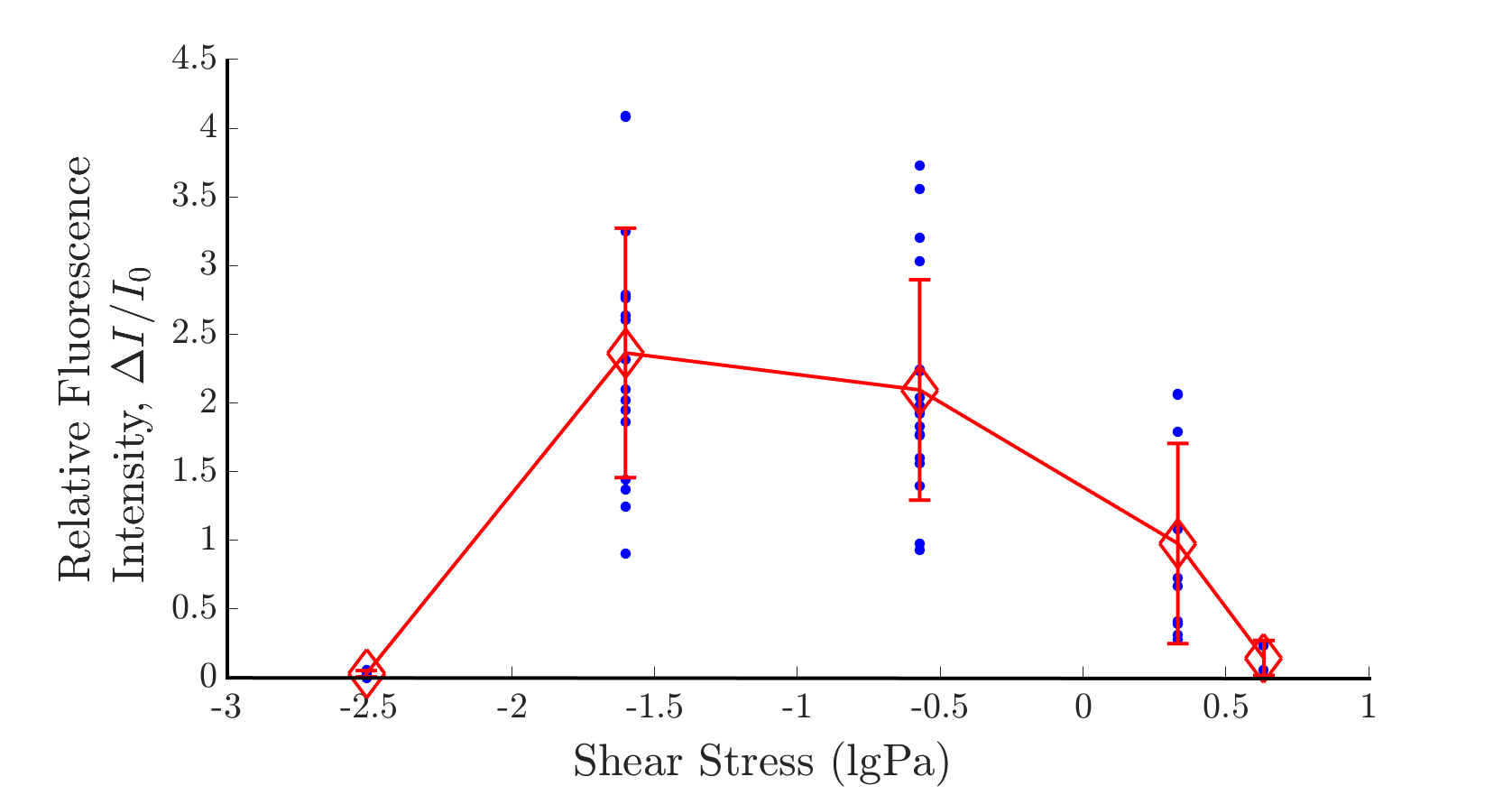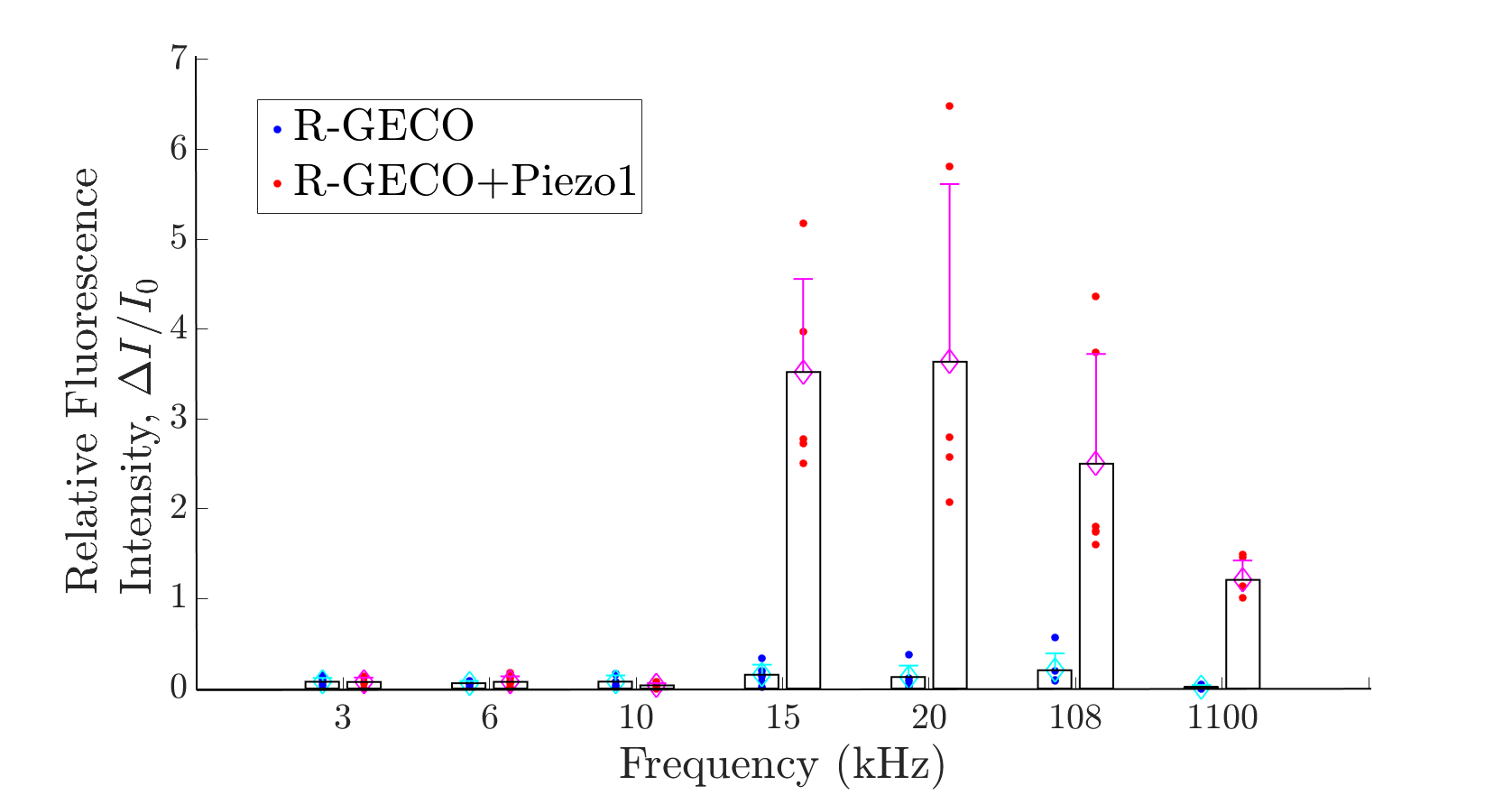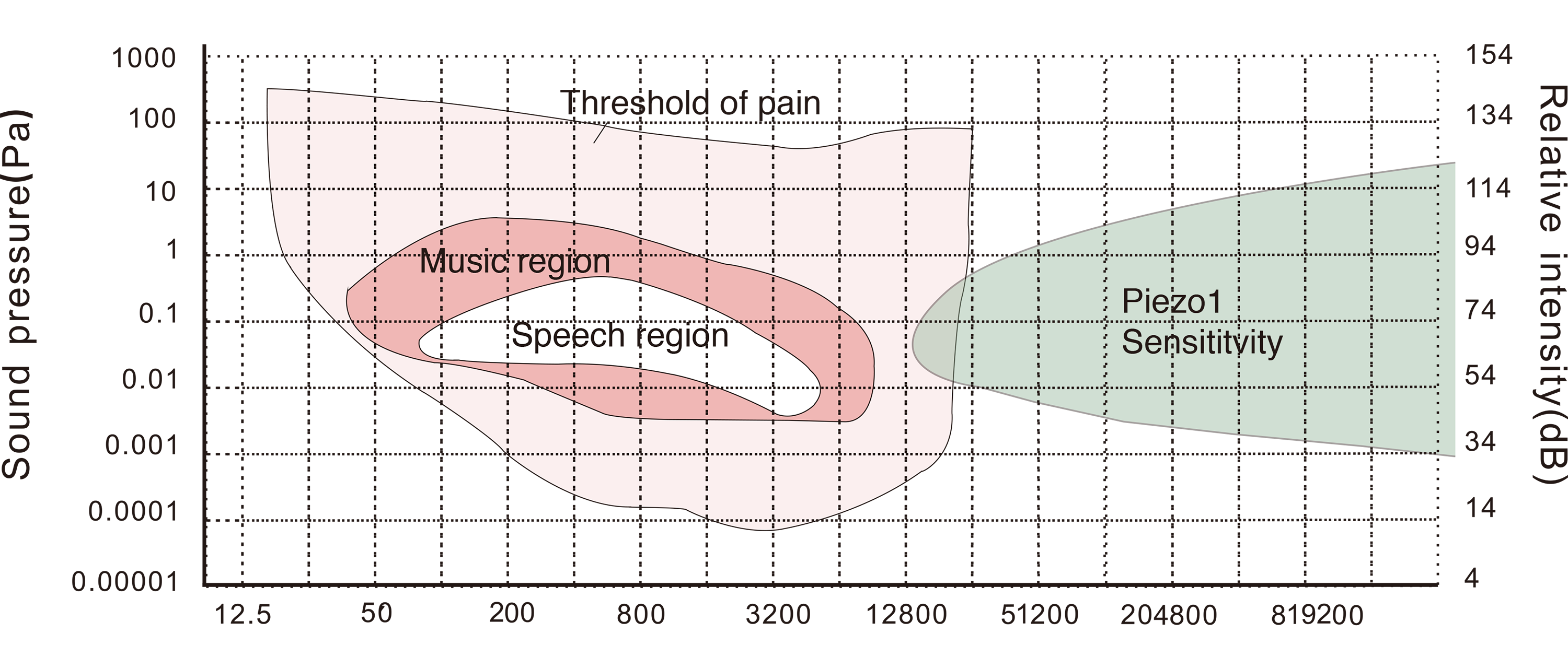| Line 5: | Line 5: | ||
url=wiki/images/9/91/T--SUSTech_Shenzhen--Demonstrat.svg|size=150px|title=Demonstrate|subtitle=Project}} | url=wiki/images/9/91/T--SUSTech_Shenzhen--Demonstrat.svg|size=150px|title=Demonstrate|subtitle=Project}} | ||
{{:Team:SUSTech_Shenzhen/main-content-begin}} | {{:Team:SUSTech_Shenzhen/main-content-begin}} | ||
| + | = Overview = | ||
| + | Precisely controling the mechanical stress applied on cells is an important key to open the door to explore the mechanism of cells' sensation to sound vibration. However, the current research methods used for mechanically activate cells are not pay much concern on the magnitude of mechanical stress. Here we designed a microfluidic chip to quantitatively tune the shear force exerted on cell membrane, and both channel are responsive to such mechical stress. Surprisingly, we discovered that Piezo1-expression CHO cell response to shear force in an biphasic manner and a maximum responsive of ~0.3 pa, which haven't found similar report in the past. | ||
| + | We also examined the intracellular calcium response to various combination of frequency and intensity of sound, including both the audible and ultrsound range. We discovered that Piezo1-expression CHO cell can sense the sound that above 15kHz, which indicate the previous identified touching sensing Piezo1 channel could detect sound wave of particular frequency range. | ||
| + | = 1. Biphasic Response of Piezo1 Channel to Mechanical Stress = | ||
| + | {{SUSTech_Image | filename=T--SUSTech_Shenzhen--demon-biphasic.png|caption=<B>Fig.1 Optimal range of shear response</B>| width=1000px}} | ||
| + | We found that Piezo1 channel exhibits two properties: high sensitivity at 0.3Pa, and biphasic response. To the best of our knowledge, | ||
| + | both are novel discoveries. | ||
| − | + | = 2. Acoustic Stimulation = | |
| − | + | {{SUSTech_Image | filename=T--SUSTech_Shenzhen--demon-sound.png | width=400px|caption=<B>Fig.2 B</B>}}{{SUSTech_Image | filename=T--SUSTech_Shenzhen--demon-audibility.png | width=400px|caption=<B>Fig.2 A</B>}} | |
{{:Team:SUSTech_Shenzhen/main-content-end}} | {{:Team:SUSTech_Shenzhen/main-content-end}} | ||
{{:Team:SUSTech_Shenzhen/wiki-footer}} | {{:Team:SUSTech_Shenzhen/wiki-footer}} | ||
{{:Team:SUSTech_Shenzhen/themeJs}} | {{:Team:SUSTech_Shenzhen/themeJs}} | ||
Revision as of 08:53, 10 November 2016

Demonstrate
Project
Contents
Overview
Precisely controling the mechanical stress applied on cells is an important key to open the door to explore the mechanism of cells' sensation to sound vibration. However, the current research methods used for mechanically activate cells are not pay much concern on the magnitude of mechanical stress. Here we designed a microfluidic chip to quantitatively tune the shear force exerted on cell membrane, and both channel are responsive to such mechical stress. Surprisingly, we discovered that Piezo1-expression CHO cell response to shear force in an biphasic manner and a maximum responsive of ~0.3 pa, which haven't found similar report in the past. We also examined the intracellular calcium response to various combination of frequency and intensity of sound, including both the audible and ultrsound range. We discovered that Piezo1-expression CHO cell can sense the sound that above 15kHz, which indicate the previous identified touching sensing Piezo1 channel could detect sound wave of particular frequency range.
1. Biphasic Response of Piezo1 Channel to Mechanical Stress
We found that Piezo1 channel exhibits two properties: high sensitivity at 0.3Pa, and biphasic response. To the best of our knowledge, both are novel discoveries.2. Acoustic Stimulation




